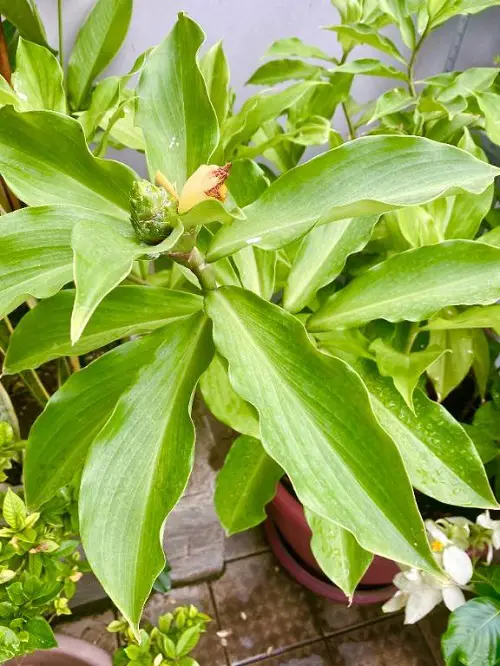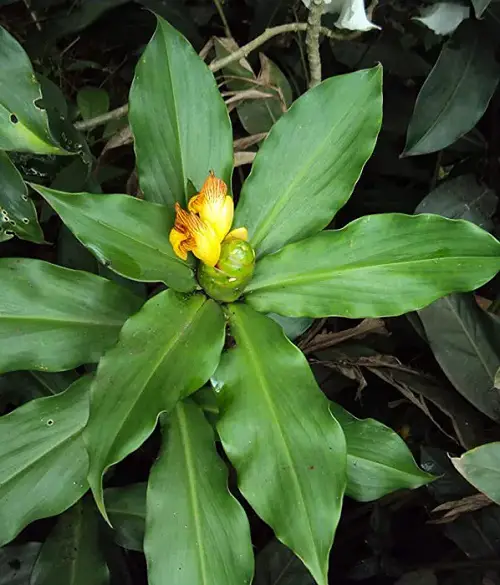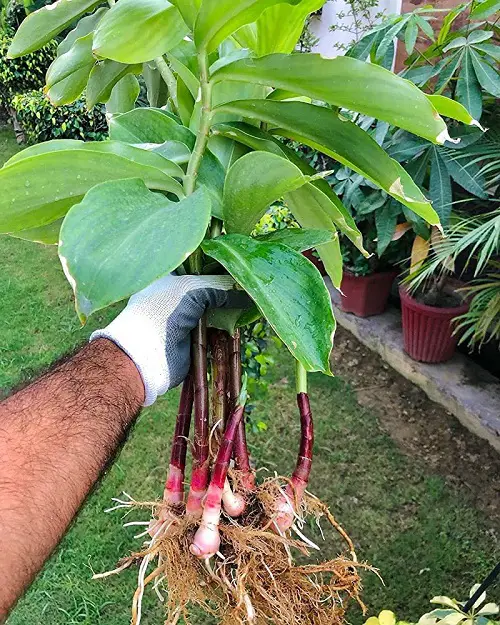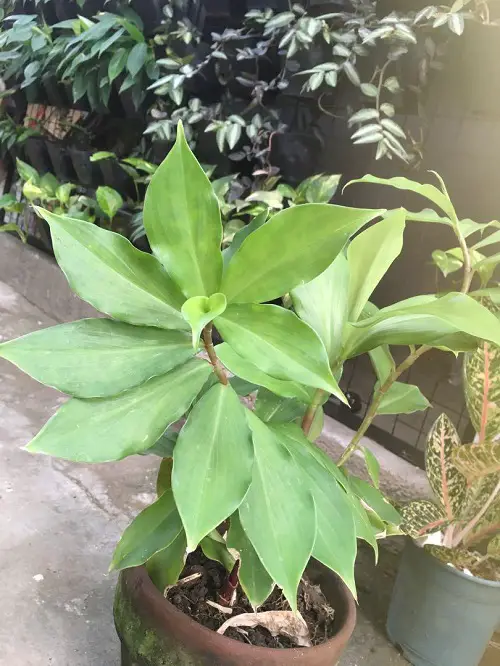If you or someone else in your family is a diabetic patient, then you must read this article on how to grow an Insulin plant easily.
 Diabetes poses a menacing threat to overall health. However, introducing an insulin plant in your collection can work wonders. So, learn everything about growing Insulin Plants easily here and say goodbye to side effects.
Diabetes poses a menacing threat to overall health. However, introducing an insulin plant in your collection can work wonders. So, learn everything about growing Insulin Plants easily here and say goodbye to side effects.
Insulin Plant Information
The Insulin Plant (Costus igneus) is commonly known as painted spiral ginger, Spiral flag, or other names. It is native to Southeast Asia and is part of the Costaceae family. It is a perennial upright spreading plant that grows up to 2 feet tall and has large oval-shaped leaves and attractive flowers.
This plant is highly valued for its medicinal properties, especially its purported ability to treat diabetes mellitus. Research has also proven that it has various other pharmacological activities, such as lowering cholesterol levels and acting as an antioxidant, combating antimicrobial infection, and inhibiting cancer growth.
Propagating Insulin Plant
Growing insulin plants from rhizome cutting is the best and easiest way! Read here to learn:
- First, you must look for a healthy, mature insulin plant to take your cuttings.
- Then, gently dig around the plant’s bases so that you can see the underground stems clearly.
- Now, choose the healthy rhizomes that are free from damage or any signs of disease. Cut them into pieces, remembering that each part has at least one bud or shoot attached to it.
- Plant these parts/pieces into a pot filled with well-draining soil while positioning the bud or shoot upwards, barely covered with soil. You have done your job!
- Now water it and remember to keep the soil damp but not too wet. Wait for a few weeks to see the new growth!
Requirements for Growing Insulin Plant
Location
Keep your insulin plant in areas where it receives ample sunlight, preferably 4-6 hours, and partial shade as well.
Soil
The plant can tolerate loamy, sandy, acidic, clay, or alkaline soil textures but performs best in rich, well-drained soil.
Learn some Great Tips to Rejuvenate Your Old Soil
Water
Maintain consistent moisture but avoid waterlogging. Generally, water the plant when the top inch of the soil feels slightly dry to the touch. You can learn the best ways to water plants. Also, in winter, watering should be reduced to prevent root rot.
Insulin Plant Care

Fertilizer
Fertilize the plant to enhance soil nutrients and support plant growth.
Pro Tip: In colder months, use organic mulch to insulate the plant. Ensure that the mulch does not touch the stem.
How You Should Use Insulin Plant?
The leaves of the Insulin Plant are consumed in various ways to harness their medicinal benefits. In India, people say one leaf of insulin plant daily for a month is enough to keep your blood glucose level low.
You can chew them directly, brew them into tea, or use them as an ingredient in salads and other culinary preparations. Additionally, you can make the powder of dried leaves and consume a tablespoon daily.
Benefits of Insulin Plants

- The plant aids in regulating diuresis, i.e., excessive urine production, helping remove toxins and excess fluids from the body.
- The corosolic acid that its leaves contain enhances insulin secretion and manages blood glucose levels.
- Also, its leaves have fructose, which facilitates digestion and can help in colon performance.
- Components in the leaves help in reducing fatty acid accumulation in the liver.
Note: While there is reliable evidence of its benefits. However, scientific research on these matters is limited and should not replace conventional diabetes treatment.
Side Effects of the Insulin Plant?
While the insulin plant offers several health benefits, it’s essential to be aware of potential side effects as well:
- Some individuals can experience allergic reactions to the plant.
- Its overconsumption can lead to stomach upset or diarrhea.
- The plant’s effects on blood sugar levels might interfere with diabetes medications.
- There is limited information on its safety during pregnancy and breastfeeding. So, women must avoid it during those periods.
You must always consult a healthcare professional before including the insulin plant in your health regimen, particularly if you are on medication or have existing health conditions.






any idea where to get seeds or cuttings?